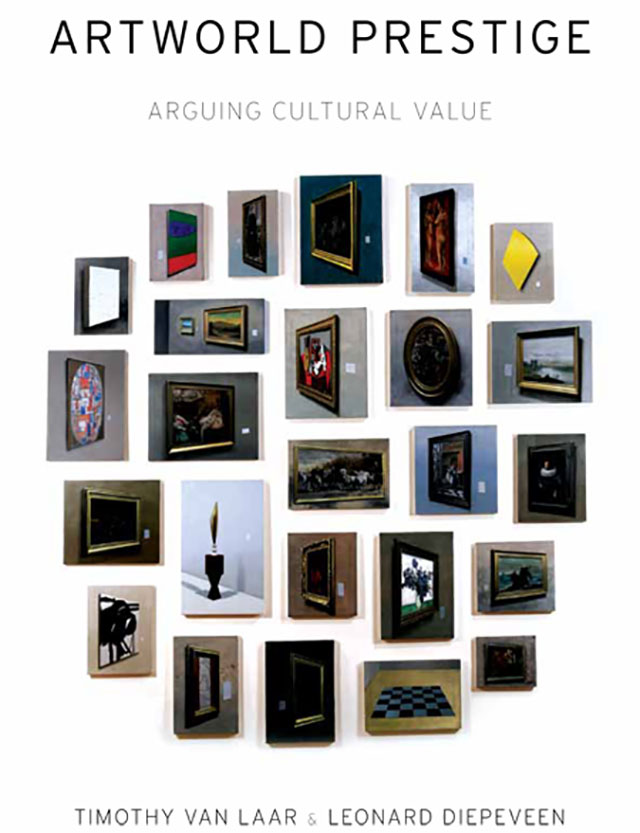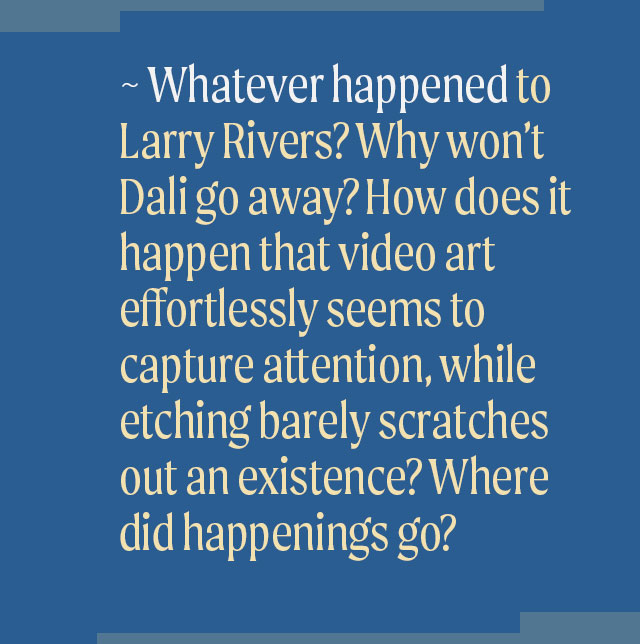

Artworld Prestige: Arguing Cultural Value. New York: Oxford University Press, 2013. Co-authored by Timothy van Laar.
Whatever happened to Larry Rivers? Why won’t Dali go away? How does it happen that video art effortlessly seems to capture attention, while etching barely scratches out an existence? Where did happenings go? Why do some things soar and others flounder?
Artworld Prestige addresses these topics of cultural argument and value, the processes by which some things in the art world win and others lose. This book looks at the function of those thousands of little estimations of value that suggest one cultural form is less relevant, worthy of attention than another; that instinctively grant more attention to reviews in Artforum over Artnews; to the Tate Modern over the Hirshhorn; to anxiety over pleasure; to Duchamp over Matisse; to conceptual art over abstract painting, and abstract painting over figure painting; and to painting over ceramics, and video over painting.s a wide range of materials. It draws on reviews and newspaper accounts of art scandals, such as the 1913 Armory Show, the 1910 and 1912 Postimpressionist shows, and Tender Buttons; to daily syndicated columns; to parodies and doggerel; to actual hoaxes, such as Spectra and Disumbrationism; to the literary criticism of Edith Sitwell; to the trial of Brancusi’s Bird in Space; and to the contents of the magazine Blind Man, including a defense of Duchamp’s Fountain, a poem by Bill Brown, and the works of, and an interview with, the bafflingly unstable painter Louis Eilshemius. In turning to these materials, the book reevaluates how modernism interacted with the public and describes how a new aesthetic begins: not as a triumphant explosion that initiates irrevocable changes, but as an uncertain muddling and struggle with ideology.
Now, since the retreat of Greenbergian formalism there have been two dominant, overlapping theoretical models for changes in and estimations of value in the art world. In one major model, power explains value; in another, economics does. Thus, Manet’s Olympia is central to the canon because of the way it challenged nineteenth-century views of gender roles and class, and how it redefined the use of art as subversion. Or, in an economic model, painting’s value is tied to the way it provides precious objects for rich elites. We argue that these models, used by critics from Laura Mulvey to Benjamin Buchloh are incomplete, and propose a third model which gets at something the other two miss. It’s a conceptualization the art world is a little embarrassed about, and it handles its embarrassment either by not talking about it, or by assuming its imprecision and irrelevance. Artworld Prestige addresses what can seem like a hopelessly dated model, one best left to moulder in the dark-paneled libraries of bearded Victorian gentlemen: prestige. Prestige, which we define as a system of hierarchies of agreed-upon social value, is a two-fold thing: it is a quality that people confer on things, but there is also a system inextricably bound up with the conferral, a system that gives the rationale for the judgments made.
Artworld Prestige is a book about the process of valuation, primarily about the loss of status. It offers a demonstration of how prestige works, particularly as it disappears, as it eludes one’s grasp and one is left behind. One’s prestige as an artist does not disappear overnight, but over a period of years, as reviews dwindle, curators look elsewhere, work gets deaccessioned. This dispatch is larger than the reputations of individual artists: modes of artmaking take a back seat, subject matters become banal, and forms of aesthetic experience lose their luster. Artworld Prestige, then, looks at these issues, arguing that prestige, and the anxiety it provokes, are central to how the art world runs.